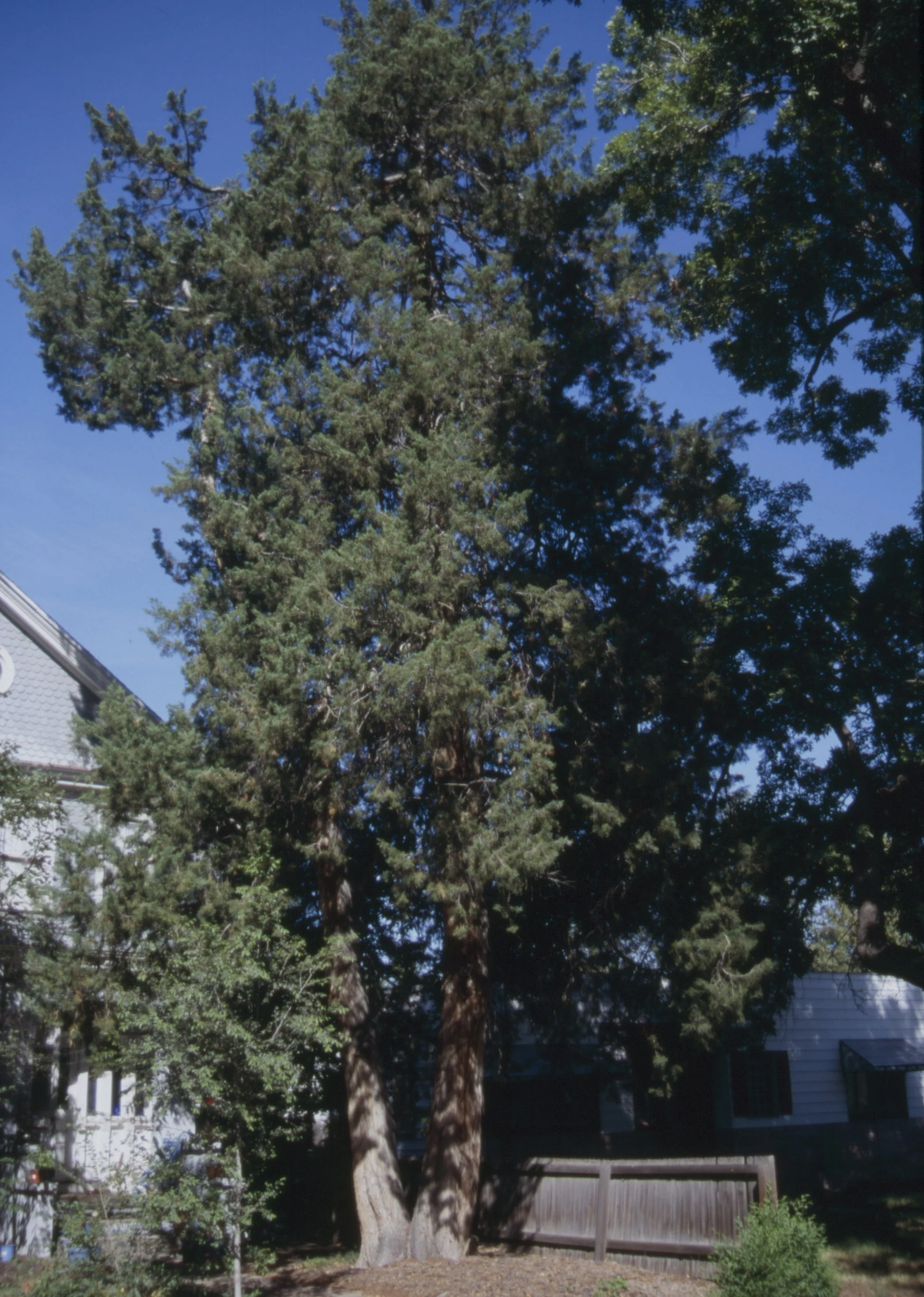eastern red cedar (Juniperus virginiana )
First place champion eastern red cedar in Denver.
Species info:
Leaves: Evergreen foliage with two types of leaves on the same plant—sharp, awl-like juvenile needles and mature scale-like leaves pressed closely to the twigs. Summer color is dark green; winter color often bronzy or rusty.
Leaflets: None (juvenile and scale foliage only).
Leaf Surface: Awl leaves sharp and pointed; scale leaves smooth and tightly overlapping, giving twigs a textured, resinous feel. Aromatic when crushed.
Bark: Light brown to gray; thin, fibrous, and peeling in long narrow strips, becoming more pronounced with age.
Flowers: Dioecious (male and female flowers on separate trees). Male pollen cones are small and yellowish; female flowers tiny and greenish.
Fruit: Berry-like cones ¼ inch in diameter; blue to purple with a waxy white coating. Contains 1–3 seeds. Matures in one year and heavily used by birds.
Botanical: Juniperus virginiana
Family: Cupressaceae
Mature Height: 30–35 feet in Colorado (shorter than in native range)
Canopy Spread: About 15–20 feet
Foliage Type: Evergreen conifer
Flower: Inconspicuous
Fruit: Small berry-like cones
Fall Color: Evergreen, but does turn bronze in winter
Tree Shape: Dense pyramidal form when young; becomes more open and sometimes pendulous with age
Growth Rate: Slow to moderate
Water Use: Low; highly drought tolerant once established
Hardiness: Zones 2–6
Soil Preference: Extremely adaptable; tolerates clay, alkaline soils, rocky sites, and drought; dislikes shade and poorly drained soils
Sun Exposure: Full sun; intolerant of shade
Wildlife Value: Blue berry-like cones (on females) are relished by birds; provides dense cover for nesting and winter shelter
Wood: Extremely durable, decay-resistant, aromatic heartwood; used historically for fenceposts, cedar chests, and pencils
Pests/Pathogens: Generally trouble-free in Colorado; may experience aphids, spider mites, spittlebugs, and is a host for cedar apple rust
Planting Recommendations: Recommended for most sites, plant in protected areas to reduce exposure
Information Sources:
Front Range Tree Recommendation List
Michael Dirr, Manual of Woody Landscape Plants (University of Georgia, 1990)


